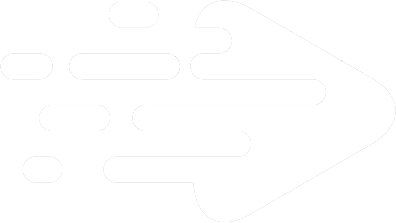When it comes to landing your dream job—especially in the remote job market—a generic, copy-and-paste cover letter just won’t cut it. Hiring managers see hundreds of applications, and most look exactly the same. So, how do you stand out in a sea of job seekers?
The answer: an idea-first cover letter.
This type of cover letter flips the script. Instead of focusing on your skills and experience (which are already in your resume), it shows your value by offering actionable ideas tailored to the company. It’s not about telling them you’re a creative problem solver—it’s about proving it right from the start.
In this article, we’ll dive into what an idea-first cover letter is, why it works, and how to write one that gets hiring managers to stop scrolling and start scheduling your interview.
What Is an Idea-First Cover Letter?
An idea-first cover letter is a personalized letter that leads with solutions. It’s not about you—it’s about them. You demonstrate your knowledge of the company by proposing two to three specific ideas that could help them solve a problem, improve their business, or achieve their goals.
This approach shows that you:
- Understand the company’s mission and challenges
- Bring fresh, creative ideas to the table
- Are proactive, thoughtful, and genuinely interested in the role
Why an Idea-First Cover Letter Works
Traditional cover letters often get skimmed or ignored because they all sound the same:
“I’m excited to apply for the [Job Title] position at [Company]. I’m a hard-working, detail-oriented professional with 5+ years of experience in [Industry].”
Sound familiar? That’s because it’s what most applicants write—and what most hiring managers tune out.
An idea-first cover letter grabs their attention by making it about them, not you. By offering real ideas that align with their goals, you position yourself as a problem solver and team player from the very first interaction.
How to Write an Idea-First Cover Letter (Step by Step)
Step 1: Research the Company
Before you can propose ideas, you need to understand the company’s challenges, values, and current initiatives. Start by:
- Exploring their website (especially the “About” and “News” sections)
- Reading recent blog posts, press releases, or case studies
- Checking their social media presence to see what they’re promoting
Look for opportunities where you can add value. Are they launching a new product? Expanding into new markets? Struggling with engagement on social media?
Step 2: Identify Two to Three Actionable Ideas
Based on your research, brainstorm a few specific ideas that relate to the job you’re applying for. Keep these ideas simple, realistic, and actionable.
For example, if you’re applying for a marketing role, your ideas might include:
- Improving social media engagement by introducing interactive content like polls and live Q&A sessions.
- Increasing blog traffic by optimizing existing content for SEO and creating a content calendar focused on trending industry topics.
- Enhancing email open rates by testing new subject lines and segmenting the audience based on engagement levels.
Step 3: Write a Compelling Opening
Start your cover letter with a friendly, enthusiastic introduction that shows you’ve done your homework. Mention something specific you admire about the company or their work.
Example:
“I’ve been following [Company Name] for a while, and I’m inspired by your commitment to [specific mission or project]. After reading about your recent [initiative, campaign, or achievement], I’d love to share a few ideas on how I could contribute as your next [Job Title].”
Step 4: Present Your Ideas
Now, get straight to the point. List your ideas clearly, using bullet points or numbered lists for easy readability.
Example:
Here are a couple of initial ideas I had after reviewing your website and social media channels:
- Boost brand visibility by launching a user-generated content campaign where your audience shares their experiences with your product. This could increase engagement and strengthen your community.
- Improve email conversion rates by testing different call-to-action formats and analyzing which ones drive the most clicks.
Step 5: Close with a Call to Action
End your cover letter by inviting the hiring manager to discuss your ideas further. Keep it professional, but friendly and confident.
Example:
“I’d love the opportunity to chat about how we can bring these ideas to life and explore how I can contribute to [Company Name]. I’m available anytime and look forward to hearing from you!”
Idea-First Cover Letter Template
Here’s a customizable template you can use:
Subject Line: [Job Title] Application – A Few Ideas for [Company Name]
Dear [Hiring Manager’s Name],
I’m excited to apply for the [Job Title] position at [Company Name]. I’ve been following your work, and I’m especially impressed by [mention a specific project, campaign, or achievement].
After learning more about your mission and current initiatives, I wanted to share a couple of ideas on how I could add value as your next [Job Title]:
- [Idea #1] – [Brief description]
- [Idea #2] – [Brief description]
I’d love to discuss these ideas and explore how I can support [Company Name]’s goals. Please let me know if you’d like to connect—I’m available anytime that works for you.
Looking forward to the conversation!
Best,
[Your Name]
[LinkedIn Profile] (optional)
[Phone Number] (optional)
Final Tips for Success
- Keep it short and direct. Your cover letter should be no more than 250-300 words.
- Use a conversational tone. Show enthusiasm without being overly formal.
- Tailor it to each job. Reuse the template, but always customize your ideas for each company.
Stand Out, Get Hired
An idea-first cover letter is your chance to break free from the crowd and show employers what makes you unique. By leading with value and offering thoughtful solutions, you’ll not only catch their attention—you’ll also demonstrate exactly why you’re the perfect fit for the role.
Ready to start landing interviews? Try this approach today and see the difference it makes in your job search!
Are you tired of the endless and frustrating job search process? Look no further than FasterGig – the smarter, automated method that will help you get remote video jobs 10 times faster with minimum effort.
With FasterGig, you can find new job opportunities in your area or even remote positions without the need for previous experience. Our website offers a quick and easy way to apply to jobs and find gigs that fit your skills and needs.
Say goodbye to the stress and time-consuming job search process and hello to a new job with FasterGig!
Click here to get started on your journey towards a brighter and more fulfilling career in the video production industry.

